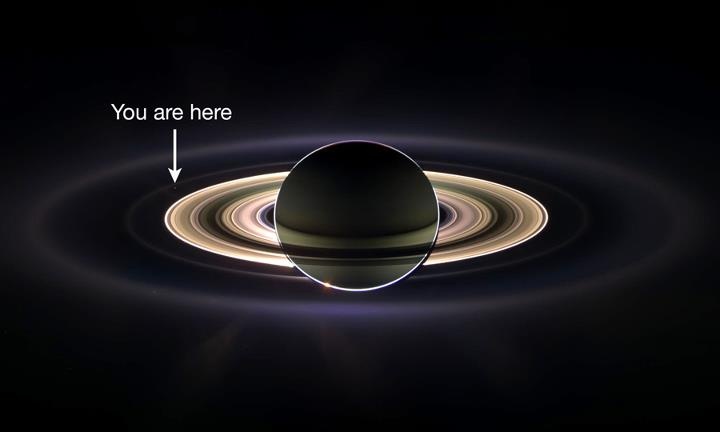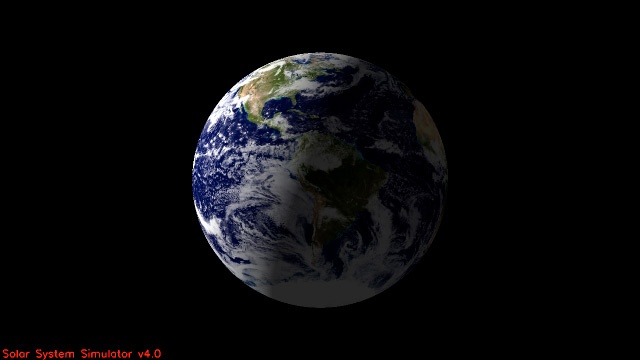Cassini and Saturn

One of the most exciting NASA Spacecraft Cassini events in 2013 will be the unusual opportunity on July 19 to image the whole Saturn system as it is backlit by the sun. With Saturn covering the harsh light of the sun, we will be gathering unique ring science and also catching a glimpse of our very own home planet.

NASA’s Cassini Spacecraft took this photo on December 19, 2012
The main science goal for the mosaic we are making of the Saturn system is to look at the more diffuse rings that encircle Saturn and check for change over time. A previous mosaic of the Saturn system Cassini made in 2006 revealed that the dusty E ring, which is fed by the water-ice plume of the moon Enceladus, had unexpectedly large variations in brightness and color around its orbit. We’ll want to see how that looks seven Earth years and a Saturnian season later, giving us clues to the forces at work in the Saturn system. We’ll do this analysis by collecting data from our visual and infrared mapping spectrometer, composite infrared mapping spectrometer and ultraviolet imaging spectrograph in addition to the imaging cameras.
But one of the best parts of the mosaic we’re making on July 19 is that we’ll be able to take a picture of Earth – and all of you — from about 898 million miles (1.44 billion kilometers) away. The Earth will appear to be just a pixel, but you can see in this simulated close-up what parts of it will be illuminated.

NASA’s Cassini Spacecraft will fly behind Saturn this weekend as it is fully backlit by the Sun.
Cassini will take many photographs (60 Frames) and Earth will be a pale blue dot.

Earth will be a pale blue dot.

For any typical observation Cassini makes of the Saturn system, the navigators spend weeks making sure that the path of the spacecraft remains within a few thousand miles (kilometers) of the path assumed during design of the observations. As the spacecraft approaches the observation, knowledge of the spacecraft’s path is improved from hundreds of miles (kilometers) to hundreds of yards (meters). For Cassini to take its picture of Earth as part of its imaging of the full Saturn system on July 19, we have to put it in the right place in Saturn’s shadow, make sure we are pointed towards Earth and our other targets and snap the images at the right time. On the spacecraft, the Earth imaging takes place between 22:47:13 UTC (03:47:13 pm PDT) and 23:01:56 UTC (04:01:56 pm PDT). The end-to-end mosaic images of Saturn and rings all fall between 22:24:00 UTC on July 19 and 02:43:00 UTC on July 20 (03:24 to 07:43 pm PDT). (For spacecraft event time, we use UTC, which is Coordinated Universal Time.)

Saturn makes an easy-to-find appearance in the night sky on July 19 and 20, too. Step outside after sunset and look to the east or southeast in the continental U.S. and look for the beautiful nearly full moon rising in the Eastern sky. You’ll see two bright stars spanning the east or southeast sky. They are Saturn and Venus and Saturn is the middle ‘star’ between the moon and Venus. You can see these with your own unaided eyes, no telescope or binoculars are needed
Read More about NASA’s Cassini Solstice Mission and “Wave at Saturn”
Source: NASA Cassini Solstice Mission
Image Credits:NASA Cassini Solstice Mission
![]()
